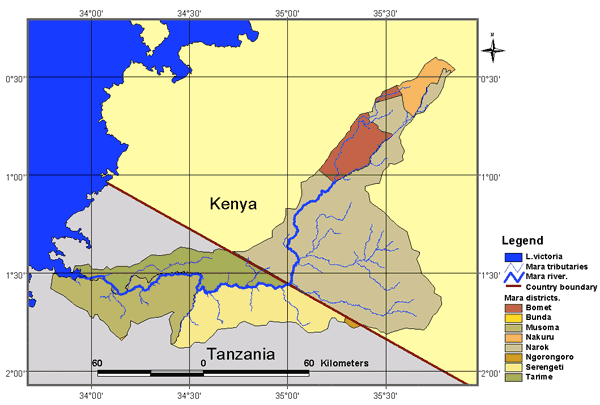Mara River Basin
NWNL WATERSHEDS
|
NEW ESRI StoryMaps: What's On Our Shelves & NWNL Song Library & No Water No Life ESRI |
NWNL WATERSHEDS
September 2009 Mara River Basin from Mau Forest to Lake Victoria: Kenya & Tanzania
April 2010 Maasai Mara NR, Mara Conservancy: Kenya
January 2012 Mau Forest Complex: Kenya
February 2012 Maasai Mara NR, Mara Conservancy: Kenya
March 2013 Mara River Basin Interviews: Kenya
January 2015 Maasai Mara NR, Mara Conservancy: Kenya
February 2016 Mau Forest, Great Rift Valley: Kenya
February 2018 Maasai Mara NR, Mara Conservancy Interviews: Kenya
February 2019 Mau Forest, Maasai Mara National Reserve and Conservancies: Kenya
THE MARA RIVER BASIN is renowned for its 2 million wildebeest and zebra that famously cross the Mara River annually for water and rain-fed grazing. Recent community-based efforts within the Maasai Mara Game Reserve have successfully managed to protect this 8th Wonder of the World. There are also 1 million Kenyans and Tanzanians that live in this watershed, which is 64% in Kenya and 36% in Tanzania. Incredible herds of wildbeeste and zebra, that make this a World Heritage Site, circle back and forth following rains and the Mara River. Yet in 2009 the river was only ankle-deep for the first time in memory. This lower water flow has continued, due to heavy upstream extraction of water for commercial irrigation, increasingly-damaging droughts, and deforestation at the river’s source – Kenya’s Mau Forest Complex.
This 1-million-acre Mau Forest catchment is Kenya’s largest water catchment, providing water to the Mara River, millions of people in Kenya, Tanzania and living all along the shores of Lake Victoria – source of the Nile River. Yet illegal deforestation and encroachment have destroyed 25% of the Mau Forest. With the loss of so many water-retaining trees, climate change impacts, proposed dams and increased irrigation withdrawals, the future of the ecosystems and iconic wildlife within the Maasai Mara National Reserve and Serengeti National Park is worrisome.

Further downstream, a proposed Serengeti Highway would bisect Serengeti NP, threaten migrating wildlife and disrupt the Mara River Basin’s World Heritage Site ecosystems. Gold mining toxins and farm run-off, as well as invasive species, clog Lake Victoria’s Mara River Estuary with algae blooms. Reforestation, limits on tourism growth and family planning are now regional priorities to protect the Mara Rivers, Lake Victoria and the incredible biodiversity and ecosystems in the Rift Valley, Western Kenya and greater Nile River Basin.
